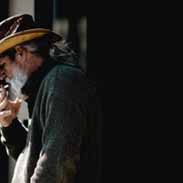Chemistry of Matter – Flashcards
Unlock all answers in this set
Unlock answersquestion
| Chemistry |
answer
| the scientific study of matter, the principal and chemical changes affecting matter and the energy changes that accompany those processes |
question
| Chemist |
answer
| scientists who studey matter, its properties and changes |
question
| Biochemistry |
answer
| the study of chemical reaction , such as growth, reproducrion and respoiration, that occur within a living organism |
question
| pH |
answer
Potential hydrogen
|
question
pH Scale |
answer
Scale of pH Balance .5 ----- Muratic Acid (Most Acidic) 2 ----- Lemon 4 ----- Peroxide 4.5 ----- Skin 5.5 ----- Skin 6 ----- Urine 6.5 ----- Saliva 7 ----- Water 6.5/7.5 --Shampoo 7.5 ----- Blood 11.5 ----- Chemical Depilatory 14 ----- Lye (Most Alkaline) |
question
| Organic Chemistry |
answer
| deals with all matter that is now living or was alive at one time. This is the stufey of matter containing carbon which is present in all plants and animals |
question
| Inorganic Chemistry |
answer
| Deals with matter that was never living and does not contain carbon |
question
| Matter |
answer
| anything that occupies space |
question
| Solids |
answer
| Mattter with definite Weight, Volume & Shape |
question
| Liquids |
answer
| Matter with definite Weight and Volume but no Shape |
question
| Gases |
answer
| Matter with definite Weight, but indefinite Volume and Shape |
question
| Physical Change |
answer
| a change in the physical form of a substance without creating a new substance possessing a distinct material composition (water to ice) |
question
| Chemical Change |
answer
| a change in a substance that creates a new substance with different material characteristics from those of the original substance |
question
| Sublimination |
answer
| The process of a solid or gas changing states without becoming a liquid |
question
| Energy |
answer
| The ability to do work to accomplish some change |
question
| Elements |
answer
| Basic units of matter that cannot be broken down into simpler substances by any chemical reaction |
question
| Periodic law |
answer
| The unifying concept used to organize elements and their similarities |
question
| Atomic Numbers |
answer
| The number shown in the Periodic Table with each element and indicates how many protons are in a simple atom of the element |
question
| Atoms |
answer
| The smallest complete unit of an element |
question
| Proton |
answer
| Have a positive electrical charge and identify the atom |
question
| Neutrons |
answer
| Have no electrical charge |
question
| Electrons |
answer
| Have a negaive electrical charge |
question
| Nucleus |
answer
| Dense core at the center of an atom formed by tightly packed together protons and neutrons (control center) |
question
| Free Electrons |
answer
| Electron in the outermost orbit that is easily moved from its orbit. if another atom has a shortage of electrons, the free electron will attempt to move tot he other atom |
question
| Molecule |
answer
| smallest particle of a compound |
question
| Compounds |
answer
When the atoms that combing are different, they create compounds created by chemically uniting two different elements Ex: water (H2O) and hydrogen Peroxide (H2O2) |
question
| Oxidation |
answer
| A substance loses an electron and oxygen is acquired |
question
| Reduction |
answer
A substance gains an electron and oxygen is released (release of oxygen to the skin) |
question
| Ionic Bond |
answer
| When positive and negaive ions join, they are held together by an ionic bond |
question
| Covalent Bond |
answer
| If no trading is taking place and the atoms are sharing the electrons, they are held together by covalent bonds. |
question
| Chemical Bond |
answer
| Forces that hold atoms together in compounds |
question
| Biochemistry |
answer
| Branches of science that deals with the chemicals related to life processes and their reactions within the body |
question
| Proteins |
answer
| Helps the body to construct and renew itself |
question
| Carbohydrates |
answer
| Used by the body to store energy and play a key role in metabolism |
question
| Lipids |
answer
| Components that fill the intercellular spaces in the skin also called intercellular element |
question
| Enzymes |
answer
Materials that dissolve and breakdown large molecules into smaller ones Ex: papain |
question
| Amino Acid |
answer
| Compounds conisisting of carben, oxygen, hydrogen, and nitrogen that join togehter in chains to form protein |
question
| Peptide Bond |
answer
| A bond unifying two amino acid groups |
question
| Polypeptide Chain |
answer
| Thousands of amino acids connected lenght-wise to form a chain |
question
| Monomers |
answer
| Basic building block molecules that connect with each other to form larger, more complex compounds |
question
| Polymers |
answer
| Groups of monomers that bond together |
question
| Saccharide |
answer
| A simple uint of carbohydrate |
question
| Monosaccharide |
answer
| A single saccharide, a simpleu sugar, such as glucose |
question
| Disaccharide |
answer
| Two saccharides linked together, such as sucurose (table sugar) |
question
| Polysaccharide |
answer
| Mny saccharides linked to form larger, more complex molecules, such as starch |



